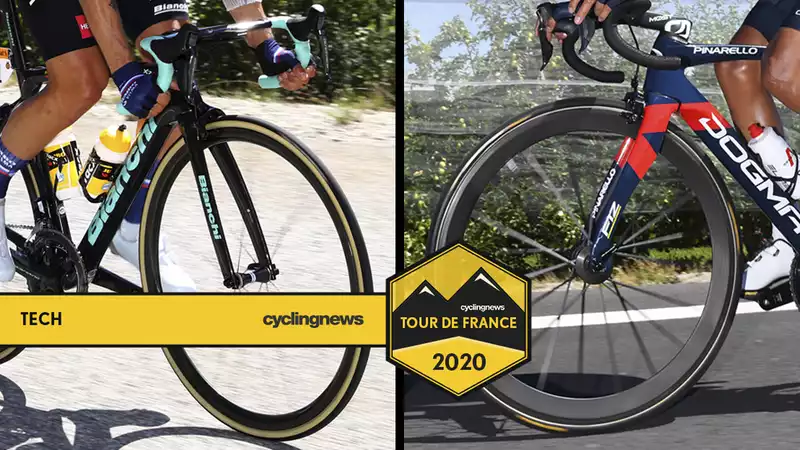First spotted at the Criterium du Dauphiné and now again at the Tour de France, Jumbo Visma seems to have followed in the footsteps of its biggest GC rival at the Tour de France, shunning Shimano wheels in favor of something else.
At the 2019 Tour de France, Team Ineos has opted to replace its Shimano hill-climbing wheels with the £5,000 Meilenstein Obermeyer wheels by the German company whose name is Lightweight.
This staggering price is accompanied by a staggering weight of only 935 grams per pair. This year, Jumbo Visma chose lightweight wheels from Astana sponsor Colima, which just so happens to be a sponsor of Astana. They chose 32mm deep WS+ tubular wheels, weighing in at 1,270 grams per pair.
The reasons for this are obvious and well known. The route, a double-header in the Pyrenees, falls into a total of eight mountain categories, making weight all the more important for the GC leaders of each team, Primosz Roglic and Egan Bernal.
Jumbo Visma's rim brake-equipped Bianchi Oltre XR4 frameset may be aerodynamic, but at 980 g for the size 55 cm frame alone, it is not light by current standards. By comparison, the newly released Trek Emonda and Specialized Tarmac are under 700 grams for the same size. Despite the presence of Bianchi's lightweight Specialissima (which is claimed to weigh 780 grams for the same size frame), the team is sticking with the brand's aero road bike.
If they were to stick with their sponsor's wheels, they would use C40 tubular wheels. However, by switching to these wheels, Ineos Grenadiers was able to save 449 grams of weight. The Jumbo Visma is 114 grams lighter.
So why choose the lesser savings offered by Colima? [Once the total weight of the bike reaches the UCI limit of 6.8 kg, mechanics must add weights to make the bike legal. Assuming Jumbo Visma could achieve 6.8 kg, there is little advantage to choosing more expensive wheels.
Furthermore, wheels are not the only component that teams can reduce weight. Jumbo Visma also eschews the trademark celeste color of Bianchi bikes in favor of a new "unique paint system. The reason for this is, again, weight. According to Bianchi, this unique paint system is worth 80 grams more than the traditional cheleste paint, because it "reduces the molecular weight of the coating."
Most World Tour bikes now have disc brakes, but the weight gain of brake technology is undeniable. Thanks to the combination of the groupset itself and the strength required for the carbon fiber frame, disc brakes are said to add 250-300 grams to the bike.
Ineos Grenadiers and Jumbo-Visma are two of the three remaining WorldTour teams that are sticking with rim brake equipment in the Tour de France.
At the Tour Down Under in January, we tested the 53cm Bianchi Oltre XR4 ridden by George Bennett and the 56cm Pinarello Dogma F12 X-Light ridden by Luke Rowe. Equipped with deep Shimano C60 tubular wheels (weighing 1496 grams), Bennett's bike weighed 7.25 kilograms, 450 grams over the UCI limit.
After losing 80 grams with the paint and 226 grams with the Colima wheel change, Bennett's new weight is 6.94 kg; teams often give a little leeway to account for inaccuracies on the scales, but that won't stop mechanics from chasing that last 194 grams.
Luke Rowe's Pinarello Dogma F12 X-Lite with the same Shimano C60 wheels weighs 7.07 kg. Given that the Ineos Grenadiers are clad in new red and blue paint by their new name, one would expect a slight increase in weight, but Bernal's smaller frame is clearly lighter from the start. Still, replacing Lowe's wheelset with a lightweight Meilenstein would reduce the weight by 561g, bringing his frame to a UCI-legal 6.5kg.
From these calculations, Ineos Grenadier has the advantage on paper. But weight is only half of the power vs. weight equation, and the Tour de France is not won on paper, but on the road. We won't know who has the advantage in the GC battle this weekend until the actual race.
.

Comments